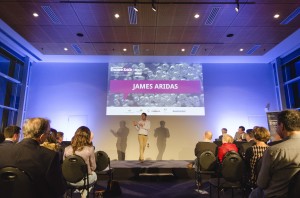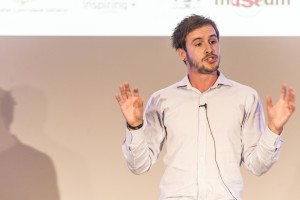
Monash University PhD student James Aridas and his colleagues at MIMR-PHI Institute’s Ritchie Centre have found that melatonin patches, commonly used to treat jetlag in the US, can reduce damaging free radicals and subsequent brain cell death when they are administered in the hours after birth asphyxia has occurred.
The discovery could help change the fate of around 300 Australian babies who develop disabilities and neurodevelopmental disorders after birth asphyxia each year, as well as that of millions of babies in developing countries where treatment is almost non-existent.
James and supervisors Dr Suzie Miller and Professor Graham Jenkin undertook preclinical studies in animals with help from the Bill & Melinda Gates Foundation, and they will begin clinical trials of the patches in India next year.
“We’re hoping to reduce the burden of chronic illness that occurs following birth asphyxia,” says James. “We’re also hoping that we can reduce the mortality rates in newborns and improve the quality of life for both the children who go on to develop conditions such as cerebral palsy, and their families.”
Melatonin is a hormone secreted by the pineal gland in the brain, which helps neutralise free radicals in the body. Free radicals are unstable molecules that are a natural waste by-product of the body when it uses oxygen to create energy.
They can damage the fats that are an important part of cell walls and organs, and which are rich in newborn babies’ brains.
The body can normally eliminate these destructive molecules. However, when a baby is starved of oxygen and then re-exposed to it, there is an overproduction of free radicals in the first hours after birth, which overwhelms the body’s capacity to eliminate them.
“The low oxygen itself does cause brain damage, but it is really in the hours following that the brain damage occurs,” James says. “There is therefore an important window of time after birth when our treatment can potentially reduce permanent brain injury.”
James and his team used MRI scans to show that the melatonin treatment improved brain metabolism and reduced cell death when it was given to lambs after birth asphyxia.
Each year, four million human babies suffer a lack of oxygen during birth worldwide, with one million of them dying and one million developing disabilities. Eighty per cent of all asphyxia cases happen in developing countries, where the bulk of deaths and disabilities also occur.
In Australia, around 1240 babies suffer birth asphyxia each year, and 10 to 25 per cent of these cases result in deaths and 25 per cent result in disabilities or long-term developmental disorders, such as cerebral palsy, epilepsy or vision and hearing loss.
According to James, the burden of disabilities is both a physical and economic one. “It costs over A$7 million to care for an Australian child with cerebral palsy over a lifetime,” he says. “Melatonin is such a cheap treatment initially, but it could reduce the economic burden immensely later on.”
James says the melatonin patches are also easy to use and can be stored without refrigeration, which could allow remote rural areas and people in developing countries to use a non-invasive, accessible and effective treatment in the important hours after birth asphyxia.
The current treatment in Australia involves expensive machines that cool the baby’s brain; however, around 50 per cent of affected babies are still disabled or die despite treatment.
James is presenting his work in public at FameLab Australia in Fremantle on 13 May 2014. FameLab is a global competition for early career scientists. James won the Victorian final and hopes to go on to the international final in the UK in June.
James is in Perth today and is available for interview, james.aridas@monash.edu, 0417 019 012,
or contact Niall Byrne, niall@scienceinpublic.com.au , 0417 131 977, (03) 9398 1416.
Photos

James Aridas presenting his talk at the FameLab Australia National Final in May. Credit: OK-White Lane © International FameLab







 Fresh Science is on hold for 2022. We will be back in 2023.
Fresh Science is on hold for 2022. We will be back in 2023.